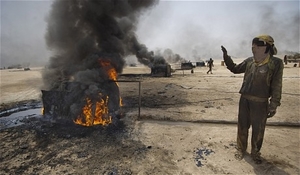SMA CENTCOM Panel Discussion on Radicalization (Part I)

Speakers: Cooley, S. (Oklahoma State University); Peterson, N. (NSI, Inc.); Wright, N. (Intelligent Biology); Polansky, S. (NSI, Inc.); Kaltenthaler, K. (University of Akron); Kuznar, L. (NSI, Inc.); Lee, H. (US Army TRADOC)
Date: 10 March 2020
Speaker Session Preview
SMA hosted a panel discussion as a part of its SMA CENTCOM Speaker Series. The panelists included Dr. Skye Cooley (Oklahoma State University), Ms. Nicole Peterson (NSI, Inc.), Dr. Nicholas Wright (Intelligent Biology), Dr. Sabrina (Pagano) Polansky (NSI, Inc.), Dr. Karl Kaltenthaler (University of Akron), Mr. Ali Jafri (NSI, Inc.), and Mr. Howard Lee (US Army TRADOC).
[B1] Dr. Cooley first presented his and his team’s work on co-creating civic narratives among citizens and using gaming exercises as intentional tools of narrative reflection to achieve deradicalization. The team identified five key learning components in deradicalization programs (group dynamic-based learning, personality competencies, addressing the roots of radicalization, the role of civil society, and custom tailored programs) and five key elements of narrative reflection (points of similarities and differences, awakening participants’ attention, open and reflective communication, introspection and constructive debate, and tailoring the gaming experience). Next, Ms. Peterson presented her and her colleagues’ work on the deradicalization of youths. Ms. Peterson stated that children of war, refugees in camps, IDPs, and children that have grown up in areas with little structure or governance have all experienced mental, emotional, and physical trauma, which makes them particularly vulnerable to radicalization. However, it is not always clear which children will become radicalized. Furthermore, no model for youth deradicalization is universal; every child’s experience is different, and thus, deradicalization programs should be tailored specifically to the children at hand. Dr. Wright then focused on risk taking in children and adolescents in London. He provided five recommendations for CENTCOM and outside actors based on his research: 1) CENTCOM should focus policies on each of three distinct periods: toddlers ages 0-4, younger children ages 5-12, and adolescents ages 13-17; 2) CENTCOM should afford the new generations opportunities for plausible non-radical, non-violent futures by helping build environments with basic education and social support; 3) A hierarchy of interventions should be used, starting with building the foundations (i.e., providing places to go and routines to follow); 4) Cost effective and scalable interventions should be used; and 5) The information environment must be enhanced.
[B4] Dr. Polansky spoke about reintegrating the radicalized, while highlighting the challenges, lessons learned, and ways to overcome barriers. She stated that there is no one-size fits all reintegration program; however, there are many common elements among programs that can be selected and tailored as needed. Some of these elements include community support, economic assistance/vocational training, and after-care/monitoring. Dr. Polansky also identified several conditions for successful reintegration, including the formation of an effective peace agreement, sustained political will, a proper understanding of the information environment, and external support. Barriers to reintegration include the 10-20% of individuals who cannot be rehabilitated and societies’/governments’ unwillingness to accept certain individuals for reintegration.
[B5] Dr. Kaltenthaler focused on preventing radicalization among IDPs in Syria and Iraq. He presented the 3N (Needs, Networks, and Narratives) model of radicalization, highlighting that an individual’s most important need is the psychological need for significance. Dr. Kaltenthaler’s research focused on the Al Hawl camp for internally displaced persons (IDPs) in Syria. Al Hawl demonstrated an abundance of the three Ns. He recommended that the focus in such a camp should be on the IDPs’ resiliency to radicalization measures, rather than individually focused counter-radicalization efforts. He also stated that Al Hawl and other IDP camps should try to improve the sense of significance among camp residents and that jobs and education will help achieve this goal. Next, Mr. Jafri explained that countering radicalization, deradicalizing extremists, and disengaging individuals from violence involves a system of measures that span from individual to community-wide interventions. Some of such interventions include youth programs (e.g., sports, education, counseling), education and vocational training for adults, timely repatriation, and the provision of general health services and psychological counseling for trauma. Mr. Jafri also highlighted that triaging and segregating people in IDP/refugee camps presents challenges, as proper training is required, and no tools for achieving this goal have been validated. To conclude, Mr. Lee presented the Athena team’s model design, which examines how at-risk populations can be protected from and become resilient to extremism in an IDP/refugee camp. The team used three cases (status quo, diversion through work, and holistic disengagement), two key actors (Syrian Democratic Forces [SDF] and the Islamic State), and three civilian groups in Al-Hawl camp (passive Salafists, Sunni neutrals, and violent Salafists). The Athena team found that to mitigate radicalization, increases in social services and economic support must be paired with the presence of a robust, competent, and ideologically compatible security force. Furthermore, establishing a conditional process for managing the distribution of social services and economic support can help effectively disengage at-risk populations from potential radicalization.
Speaker Session Audio Recording
Note: Dr. Polansky’s portion of the audio was not included in the website listing, as per her request. Please email Ms. Nicole Omundson (nomundson@nsiteam.com) to access the full audio recording.
Comments